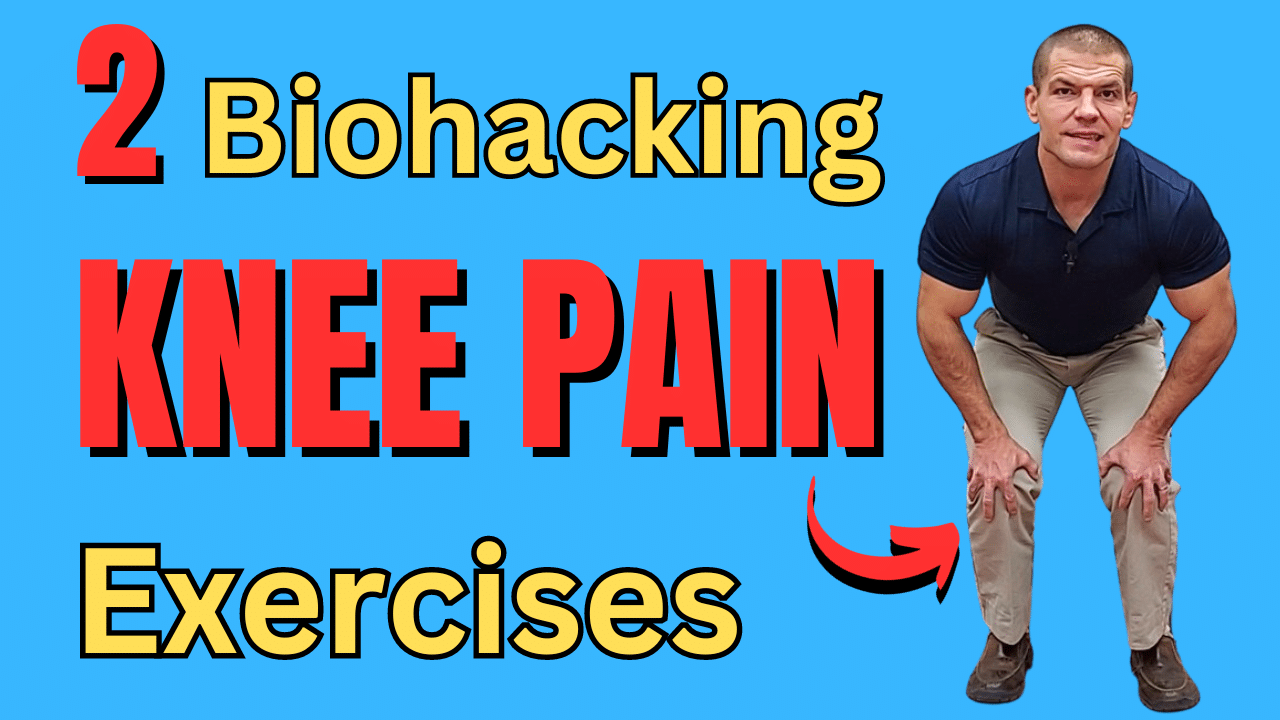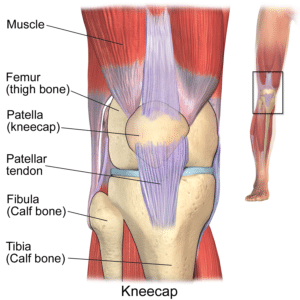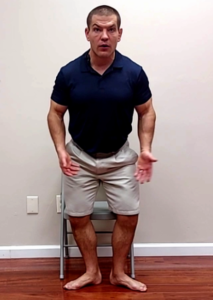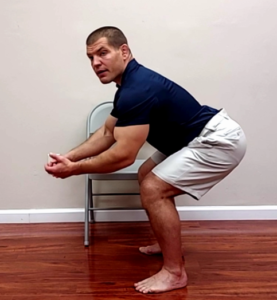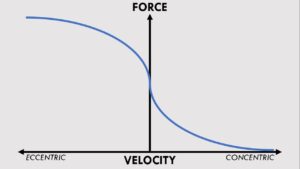Watch this video to learn two knee pain exercises to biohack your nervous system into better range of motion and strength and help you decrease your knee pain.
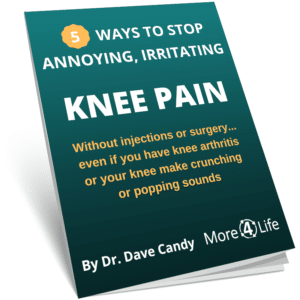
2 Biohacking Knee Pain Exercises
The exercises in this post will help you tap into neurophysiological principles to biohack your nervous system into better range of motion and strength.
Knee Pain Exercise 1: Improving Knee Bending
The first exercise is going to improve your knee flexibility, particularly your ability to bend your knee.
Many people with knee pain have stiffness in their stiffness in their thigh muscles or quadricep muscles.
Your kneecap sits inside the tendon of that quadricep muscle.
The more you bend your knee, the more the quadriceps get stretched over the knee.
This in turn compresses your kneecap against the thigh bone.
To improve your flexibility in the quadricep muscles, we'll do a knee-bending exercise in sitting.
Seated Knee Flexion Exercise
To do this, bend your knee as much as you can comfortably.
Don't push it to the maximum; just go to the point where you can without pain.
Cross your other leg over the ankle.
Then kick the sore leg into the opposite leg, holding that position for about five to ten seconds.
It's not a maximum contraction. It's a gentle kick to activate the thigh muscles.
Then relax.
Use the opposite leg to help pull it into a deeper stretch.
This activates the quadriceps muscle. After the quadriceps relaxes, your muscle goes through a relaxation period, making it easier to stretch.
This is known as autogenic inhibition, where the muscle inhibits itself.
Now, fire the opposite muscle, the hamstring, using reciprocal inhibition.
Pull back using your hamstring muscle, hold the position, and relax.
Continue this cycle, kicking the quadricep muscle, firing the hamstring, and gradually increasing the stretch.
Knee Pain Exercise 2: Eccentric-Isometric Squat
The second exercise is a strengthening exercise, particularly for people with pain when squatting or going downstairs.
This exercise tackles both bending your knees and producing force with your thigh muscles.
Start with a squat, setting your feet in a comfortable position. Then turn your knees out to align with the toes.
Sit back a little, keeping the weight on your heels.
Hold the position for five to ten seconds, turning your knees out and engaging your glute muscles.
After holding, go down a little deeper.
This uses something called the the force-velocity curve.
Essentially, this means that it's easier to lower a weight than it is to hold it stationary. And, it's easier to hold a weight still than it is to raise a weight.
Furthermore, lower in weight fast is easier than lowering a weight slowly, and lifting a weight slowly is easier than lifting a weight quickly.
Lower down to a comfortable point, hold isometrically in that range. This targeted approach strengthens your muscles in that specific range.
Next go down a little deeper and hold again.
Once you get down as deep as you're able to comfortably, push back up through your heels as fast as you can.
Remember to maintain knee-to-toe alignment and avoid pushing your knees too far forwards or letting them come too far inwards.
Use a chair behind you for safety during this exercise so that you can sit down if you get tired or shaky or lose your balance.
Conclusion
These two exercises, when done consistently, can biohack your nervous system into providing better knee flexibility and strength while helping to decrease knee pain.
Need More Help For Knee Pain?
If you live in the St. Louis area and need more help for knee pain, we'd be happy to help you here at More 4 Life.
Just tap the button below to request an appointment with one of our specialist physical therapists.
Here are some other posts about how to relieve knee pain that you might enjoy:
Do You Get Knee Pain At Night While Sleeping? Check Our our great post on "How To Relieve Back Pain, Hip Pain, & Knee Pain At Night While Sleeping"!
Do You Get Knee Pain When Squatting? Learn to Squat Without Knee Pain!
Do You Get Back Pain When Standing Up From A Sitting Position?
If so, check our our post "Relieve Back Pain When Standing Up From A Sitting Position"

